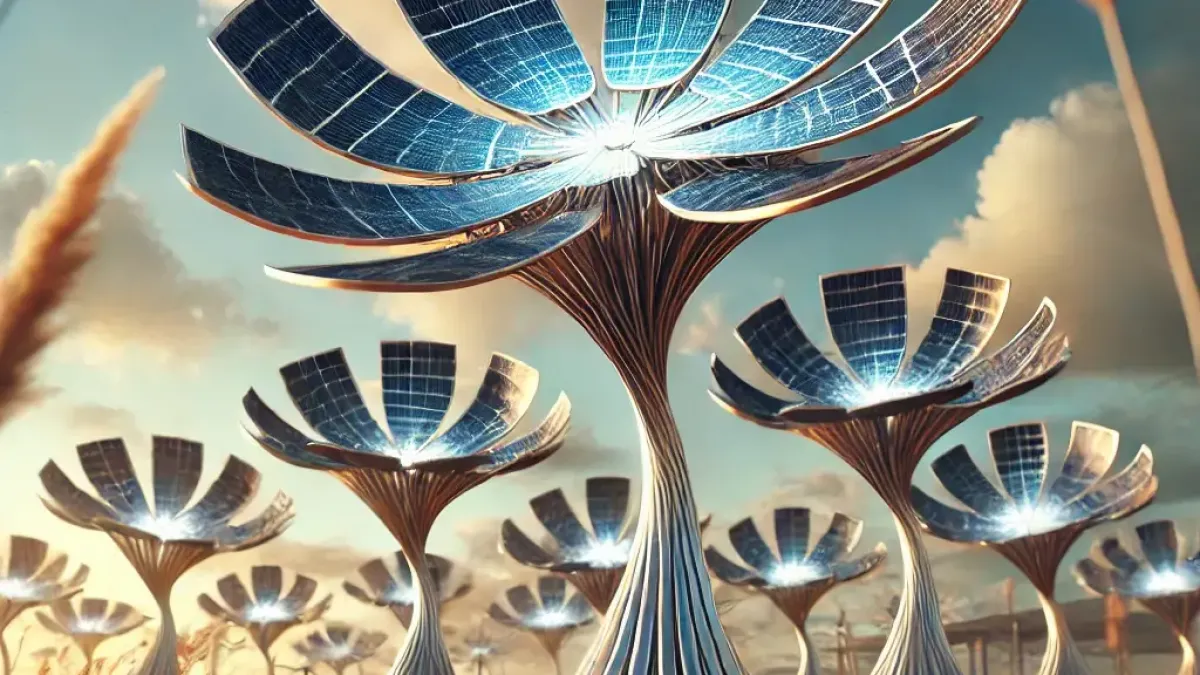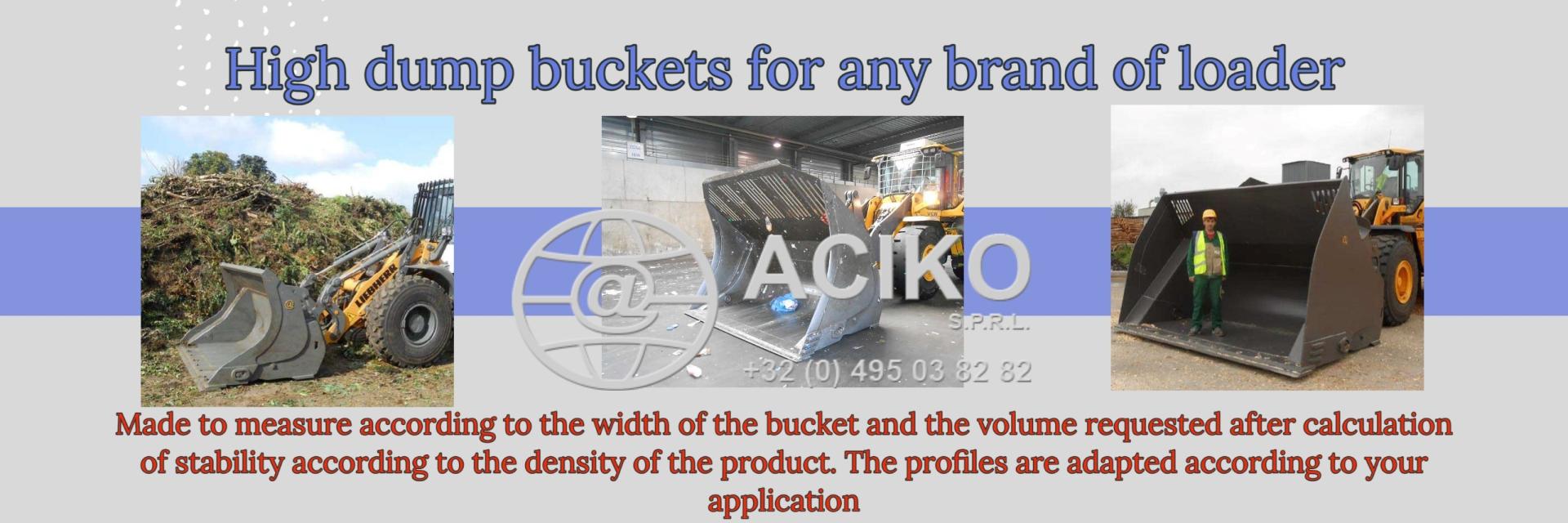R.E.News future Technology-Teaching Solar Panels to Dance with the Wind
 15/01/25-FR-English-NL-footer
15/01/25-FR-English-NL-footer
Apprendre aux panneaux solaires à danser avec le vent !
 Image-R.E.News
Image-R.E.News
Exploiter l’énergie solaire n’a jamais été aussi crucial dans la quête mondiale d’émissions nettes nulles. Alors que l’énergie solaire s’impose rapidement comme la source d’énergie renouvelable connaissant la croissance la plus rapide, il est primordial de garantir sa durabilité et sa résilience face aux forces naturelles.
Bien que les panneaux solaires soient des merveilles d’ingénierie moderne, leur vulnérabilité aux conditions météorologiques extrêmes, en particulier aux vents violents, pose des défis importants. Une équipe de chercheurs en France vient peut-être de déchiffrer le code permettant de résoudre ce problème, et cela nécessite un peu de science, une touche d’IA et un peu d’ingéniosité.
Les systèmes solaires photovoltaïques (PV) sont à l’avant-garde des énergies renouvelables, convertissant la lumière du soleil en électricité avec une efficacité remarquable. L’Agence internationale de l’énergie (AIE) a souligné que l’énergie solaire était une pierre angulaire pour atteindre l’objectif mondial de zéro émission nette d’ici 2050. En exploitant le vaste potentiel énergétique du soleil, les nations du monde entier visent à réduire les émissions de dioxyde de carbone et à passer à des réseaux énergétiques plus propres.
Cependant, même si les panneaux solaires offrent une alternative plus propre aux combustibles fossiles, ils ne sont pas sans inconvénients. L’éolien, par exemple, entretient une relation amour-haine avec les panneaux solaires. D’une part, cela permet d’éliminer la poussière et les débris des panneaux, améliorant ainsi l’efficacité. Cela les refroidit également, atténuant la chaleur qui peut diminuer leurs performances.
D’un autre côté, des vents violents peuvent causer des ravages, entraînant potentiellement des dommages structurels, des temps d’arrêt opérationnels et des pertes financières importantes. En fait, les demandes d’indemnisation liées aux dommages causés par le vent dans les systèmes photovoltaïques ont augmenté à mesure que l’adoption de l’énergie solaire se développe.
Conscient de ces vulnérabilités, un groupe de chercheurs du Centre de formation des matériaux de l'Université PLS de Sophia Antipolis, en France, s'est lancé à la recherche d'une solution. Leur étude révolutionnaire, publiée dans Physics of Fluids par AIP Publishing, explore un nouveau cadre de prise de décision numérique visant à protéger les panneaux solaires en cas de conditions météorologiques extrêmes.
« En combinant la dynamique des fluides avancée et l’intelligence artificielle, nous avons vu une opportunité de traiter les risques de dommages causés par le vent de manière innovante et de contribuer à la résilience des systèmes d’énergie renouvelable », a déclaré Elie Hachem, l’un des auteurs de l’étude.
Les méthodes traditionnelles de protection des panneaux solaires contre les dommages causés par le vent reposent sur la modification de l’espacement des rangées, de la garde au sol et des angles d’inclinaison. Bien que ces stratégies aient leurs mérites, elles sont loin d’être infaillibles. Les panneaux sont généralement placés dans une position de « rangement » sûre, parallèle au sol, lorsque les vents atteignent des vitesses critiques. Cette approche présente toutefois des limites : elle réduit la production d’énergie et n’offre souvent pas une protection suffisante contre les conditions de vent les plus extrêmes.
Le cadre innovant de l’équipe de recherche adopte une approche résolument plus intelligente. En combinant l’apprentissage automatique avec des simulations éoliennes avancées, la méthode optimise les angles d’inclinaison des panneaux solaires individuels lors d’événements de vents violents. Ce qui distingue ce système est sa capacité à traiter chaque panneau comme un « décideur » indépendant. Au lieu de s’appuyer sur des positions de rangement statiques, les panneaux peuvent s’adapter de manière dynamique, en ajustant leurs angles pour réduire le stress et maintenir un certain niveau de production d’énergie.
« C’est comme apprendre aux panneaux à danser avec le vent, en minimisant les dommages tout en protégeant la production d’énergie lors de vents violents », explique Hachem.
En intégrant l’intelligence artificielle et la dynamique des fluides numérique, ce système offre une solution évolutive et concrète pour améliorer la résilience des infrastructures d’énergie solaire. Lors des tests préliminaires, il a largement surpassé les méthodes conventionnelles, offrant une protection plus adaptative et plus efficace contre les conditions météorologiques extrêmes.
Ce cadre décisionnel n’est pas seulement une victoire pour les ingénieurs ; c'est un pas en avant pour la durabilité. En réduisant les risques de dommages causés par le vent, il garantit que les panneaux solaires restent opérationnels et efficaces, même dans des conditions difficiles. Cela permet non seulement de réduire les coûts de réparation et les demandes d’indemnisation des assurances, mais contribue également à l’objectif plus large de créer un réseau d’énergie renouvelable fiable.
De plus, les implications de cette recherche s’étendent au-delà des panneaux solaires. La fusion de l’IA et de la dynamique des fluides a le potentiel d’influencer d’autres secteurs dépendants des énergies renouvelables et des systèmes adaptatifs. Des éoliennes aux unités de stockage d’énergie, les possibilités sont vastes.
Alors que le monde se lance dans la lutte contre le changement climatique, chaque innovation compte. Le travail de l’équipe française illustre le type de solutions avant-gardistes nécessaires pour relever les défis auxquels sont confrontées les énergies renouvelables. En permettant aux panneaux solaires de « penser » et de s’adapter, ils ne se contentent pas de protéger une ressource essentielle ; ils redéfinissent l’avenir des infrastructures d’énergie renouvelable.
L’étude, intitulée « Combinaison de l’apprentissage automatique et de la dynamique des fluides computationnelle pour l’optimisation de l’angle d’inclinaison des panneaux solaires dans des vents extrêmes », devrait apporter une contribution significative au domaine. Publiée dans Physics of Fluids le , elle est rédigée par T. Michel, A. Ansaldi, J. Viquerat, P. Meliga et E. Hachem. La recherche offre un modèle de la manière dont les technologies avancées peuvent renforcer la résilience des systèmes d’énergie renouvelable, garantissant leur viabilité dans un monde de plus en plus défini par les incertitudes climatiques.
Cette approche innovante de la protection des panneaux solaires annonce une nouvelle ère dans les énergies renouvelables. En apprenant aux panneaux à « danser » avec le vent, les chercheurs ouvrent la voie à des systèmes plus intelligents et plus résilients capables de résister à l’épreuve du temps et de la nature.
Alors que les énergies renouvelables continuent de croître, notre capacité à innover doit également croître. Des solutions comme celle-ci soulignent l’importance de combiner technologie et créativité, garantissant un avenir énergétique durable et résilient pour les générations à venir.
NJC.© Info Physics of Fluids
-------------------------------------------------------------------------------------------------------------------
 15/01/25-English
15/01/25-English
Teaching Solar Panels to Dance with the Wind !
 Image-R.E.News
Image-R.E.News
Harnessing the power of the sun has never been more critical in the global pursuit of net-zero emissions. As solar energy rapidly ascends as the fastest-growing renewable energy source, ensuring its sustainability and resilience against natural forces is paramount.
While solar panels are marvels of modern engineering, their vulnerability to extreme weather, particularly high winds, poses significant challenges. A team of researchers in France, however, may have just cracked the code to address this issue—and it involves a little bit of science, a touch of AI, and some ingenuity.
Solar photovoltaic (PV) systems are at the forefront of renewable energy, converting sunlight into electricity with remarkable efficiency. The International Energy Agency (IEA) has highlighted solar power as a cornerstone in achieving global net-zero emissions by 2050. By leveraging the sun’s vast energy potential, nations worldwide aim to cut carbon dioxide emissions and transition to cleaner energy grids.
However, while solar panels provide a cleaner alternative to fossil fuels, they’re not without their quirks. Wind, for instance, has a love-hate relationship with solar panels. On the one hand, it helps by clearing dust and debris from the panels, improving efficiency. It also cools them down, mitigating the heat that can diminish their performance.
On the other hand, high wind speeds can wreak havoc, potentially causing structural damage, operational downtimes, and significant financial losses. In fact, insurance claims tied to wind-related damage in PV systems have surged as the adoption of solar energy grows.
Recognising these vulnerabilities, a group of researchers at the Centre for Material Forming at PLS University in Sophia Antipolis, France, set out to find a solution. Their ground-breaking study, published in Physics of Fluids by AIP Publishing, explores a novel numerical decision-making framework aimed at safeguarding solar panels during extreme weather.
“By blending advanced fluid dynamics and artificial intelligence, we saw an opportunity to address wind damage risks innovatively and contribute to the resilience of renewable energy systems,” said Elie Hachem, one of the study’s authors.
Traditional methods for protecting solar panels from wind damage have centred on altering row spacing, ground clearance, and tilt angles. While these strategies have their merits, they’re far from foolproof. Panels are typically placed in a safe ‘stow’ position parallel to the ground when winds reach critical speeds. This approach, however, has limitations: it reduces energy output and often fails to offer sufficient protection against the most severe wind conditions.
The research team’s innovative framework takes a decidedly smarter approach. Combining machine learning with advanced wind simulations, the method optimises the tilt angles of individual solar panels during high-wind events. What sets this system apart is its ability to treat each panel as an independent ‘decision-maker.’ Instead of relying on static stow positions, panels can adapt dynamically, adjusting their angles to reduce stress and maintain some level of energy production.
“It’s like teaching the panels to dance with the wind, minimizing damage while protecting energy production during high wind speeds,” explained Hachem.
By integrating artificial intelligence and computational fluid dynamics, this system offers a scalable, real-world solution to enhance the resilience of solar energy infrastructure. In preliminary tests, it has significantly outperformed conventional methods, providing a more adaptive and effective safeguard against extreme weather.
This decision-making framework isn’t just a win for engineers; it’s a step forward for sustainability. By reducing wind damage risks, it ensures that solar panels remain operational and efficient, even in challenging conditions. This not only reduces repair costs and insurance claims but also contributes to the broader goal of creating a reliable renewable energy grid.
Moreover, the implications of this research extend beyond solar panels. The fusion of AI and fluid dynamics has the potential to influence other sectors reliant on renewable energy and adaptive systems. From wind turbines to energy storage units, the possibilities are vast.
As the world races to combat climate change, every innovation counts. The French team’s work exemplifies the kind of forward-thinking solutions needed to tackle the challenges facing renewable energy. By enabling solar panels to ‘think’ and adapt, they’re not just protecting a critical resource; they’re redefining the future of renewable energy infrastructure.
The study, titled “Combining machine learning and computational fluid dynamics for solar panel tilt angle optimization in extreme winds,” is set to be a significant contribution to the field. Published in Physics of Fluids on , it’s authored by T. Michel, A. Ansaldi, J. Viquerat, P. Meliga, and E. Hachem. The research offers a blueprint for how advanced technologies can bolster the resilience of renewable energy systems, ensuring their viability in a world increasingly defined by climate uncertainties.
This innovative approach to solar panel protection heralds a new era in renewable energy. By teaching panels to ‘dance’ with the wind, researchers are paving the way for smarter, more resilient systems capable of withstanding the test of time—and nature.
As renewable energy continues to grow, so too must our capacity to innovate. Solutions like this underscore the importance of blending technology with creativity, ensuring a sustainable and resilient energy future for generations to come.
NJC.© Info Physics of Fluids
-------------------------------------------------------------------------------------------------------------------
 15/01/25-NL
15/01/25-NL
Zonnepanelen leren dansen met de wind !
 Image-R.E.News
Image-R.E.News
Het benutten van de kracht van de zon is nog nooit zo belangrijk geweest voor het wereldwijde streven naar netto-nuluitstoot. Omdat zonne-energie snel groeit als de snelst groeiende bron van hernieuwbare energie, is het van het grootste belang om de duurzaamheid ervan en de veerkracht ervan tegen natuurkrachten te waarborgen.
Zonnepanelen zijn weliswaar wonderen van moderne techniek, maar hun kwetsbaarheid voor extreme weersomstandigheden, met name harde wind, vormt een groot probleem. Een team van onderzoekers in Frankrijk heeft echter mogelijk de code gekraakt om dit probleem aan te pakken. En dat vereist een beetje wetenschap, een vleugje AI en wat vindingrijkheid.
Zonne-energiesystemen (PV-systemen) zijn koplopers op het gebied van hernieuwbare energie. Ze zetten zonlicht met een opmerkelijke efficiëntie om in elektriciteit. Het Internationaal Energieagentschap (IEA) heeft zonne-energie aangemerkt als een hoeksteen voor het bereiken van wereldwijde netto-nul-emissies in 2050. Door het enorme energiepotentieel van de zon te benutten, streven landen wereldwijd ernaar de uitstoot van koolstofdioxide te verminderen en over te stappen op schonere energienetwerken.
Hoewel zonnepanelen een schoner alternatief bieden voor fossiele brandstoffen, hebben ze ook hun eigenaardigheden. Windenergie heeft bijvoorbeeld een haat-liefdeverhouding met zonnepanelen. Enerzijds helpt het om stof en vuil van de panelen te verwijderen, waardoor de efficiëntie wordt verbeterd. Het koelt ze ook af, waardoor de hitte die hun prestaties kan verminderen, wordt verminderd.
Aan de andere kant kunnen hoge windsnelheden grote schade aanrichten, met mogelijke structurele schade, operationele uitval en aanzienlijke financiële verliezen tot gevolg. Sterker nog, het aantal verzekeringsclaims voor windgerelateerde schade aan PV-systemen is toegenomen naarmate zonne-energie steeds populairder wordt.
Een groep onderzoekers van het Centre for Material Forming van de PLS Universiteit in Sophia Antipolis, Frankrijk, herkende deze kwetsbaarheden en ging op zoek naar een oplossing. Hun baanbrekende onderzoek, gepubliceerd in Physics of Fluids door AIP Publishing, onderzoekt een nieuw numeriek besluitvormingskader dat gericht is op het beschermen van zonnepanelen tijdens extreme weersomstandigheden.
"Door geavanceerde vloeistofdynamica en kunstmatige intelligentie te combineren, zagen we een kans om risico's van windschade op innovatieve wijze aan te pakken en bij te dragen aan de veerkracht van hernieuwbare energiesystemen", aldus Elie Hachem, een van de auteurs van de studie.
Traditionele methoden om zonnepanelen te beschermen tegen windschade, richten zich op het aanpassen van de rijafstand, de bodemvrijheid en de kantelhoek. Hoewel deze strategieën hun voordelen hebben, zijn ze verre van waterdicht. Panelen worden doorgaans in een veilige ‘stow’-positie parallel aan de grond geplaatst wanneer de wind kritische snelheden bereikt. Deze aanpak kent echter beperkingen: het vermindert de energieopbrengst en biedt vaak onvoldoende bescherming tegen de zwaarste windomstandigheden.
Het innovatieve raamwerk van het onderzoeksteam hanteert een duidelijk slimmere aanpak. Door machine learning te combineren met geavanceerde windsimulaties optimaliseert de methode de kantelhoeken van afzonderlijke zonnepanelen tijdens harde wind. Wat dit systeem onderscheidt, is het vermogen om elk paneel te behandelen als een onafhankelijke 'beslisser'. In plaats van te vertrouwen op statische opbergposities, kunnen panelen zich dynamisch aanpassen en hun hoeken aanpassen om stress te verminderen en een bepaald niveau van energieproductie te behouden.
"Het is alsof je de panelen leert om met de wind te dansen, waardoor de schade wordt geminimaliseerd en de energieproductie wordt beschermd tijdens hoge windsnelheden", legt Hachem uit.
Door kunstmatige intelligentie en computationele vloeistofdynamica te integreren, biedt dit systeem een schaalbare, praktische oplossing om de veerkracht van de infrastructuur voor zonne-energie te verbeteren. Uit voorlopige tests is gebleken dat het de conventionele methoden aanzienlijk overtreft en een beter aanpasbare en effectievere bescherming biedt tegen extreme weersomstandigheden.
Dit besluitvormingskader is niet alleen een overwinning voor ingenieurs; het is een stap voorwaarts voor duurzaamheid. Door het risico op windschade te verkleinen, blijven zonnepanelen operationeel en efficiënt, zelfs onder uitdagende omstandigheden. Dit verlaagt niet alleen de reparatiekosten en verzekeringsclaims, maar draagt ook bij aan het bredere doel om een betrouwbaar, hernieuwbaar energienet te creëren.
Bovendien reiken de implicaties van dit onderzoek verder dan alleen zonnepanelen. De fusie van AI en vloeistofdynamica kan mogelijk ook andere sectoren beïnvloeden die afhankelijk zijn van hernieuwbare energie en adaptieve systemen. Van windturbines tot energieopslagunits: de mogelijkheden zijn eindeloos.
Terwijl de wereld klimaatverandering aanpakt, telt elke innovatie. Het werk van het Franse team is een voorbeeld van het soort vooruitstrevende oplossingen dat nodig is om de uitdagingen op het gebied van hernieuwbare energie aan te pakken. Door zonnepanelen in staat te stellen te ‘denken’ en zich aan te passen, beschermen ze niet alleen een cruciale hulpbron; Ze herdefiniëren de toekomst van de infrastructuur voor hernieuwbare energie.
De studie, getiteld "Combining machine learning and computational fluid dynamics for solar panel tilt angle optimization in extreme winds", zal een belangrijke bijdrage leveren aan het vakgebied. Het is gepubliceerd in Physics of Fluids op en is geschreven door T. Michel, A. Ansaldi, J. Viquerat, P. Meliga en E. Hachem. Het onderzoek biedt een blauwdruk voor hoe geavanceerde technologieën de veerkracht van hernieuwbare energiesystemen kunnen versterken en hun levensvatbaarheid kunnen garanderen in een wereld die steeds meer wordt bepaald door klimaatonzekerheden.
Deze innovatieve benadering van de bescherming van zonnepanelen luidt een nieuw tijdperk in hernieuwbare energie in. Door panelen te leren 'dansen' met de wind, banen onderzoekers de weg voor slimmere, veerkrachtigere systemen die de tand des tijds en de natuur kunnen doorstaan.
Naarmate hernieuwbare energie blijft groeien, moet ook ons vermogen om te innoveren groeien. Oplossingen als deze benadrukken het belang van het combineren van technologie met creativiteit en het garanderen van een duurzame en veerkrachtige energietoekomst voor toekomstige generaties.
NJC.© Info Physics of Fluids
-------------------------------------------------------------------------------------------------------------------
Date de dernière mise à jour : 14/01/2025
















